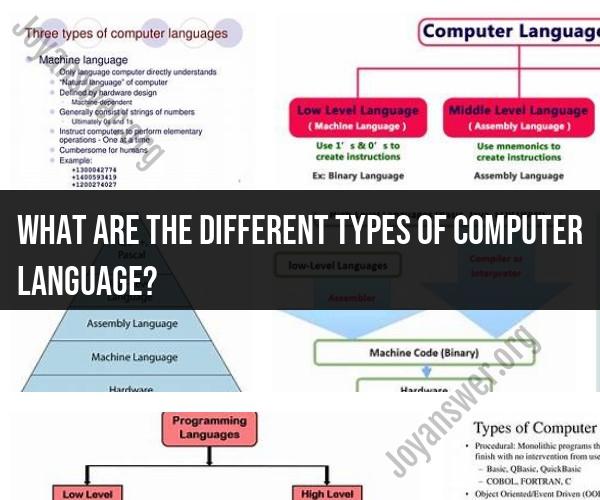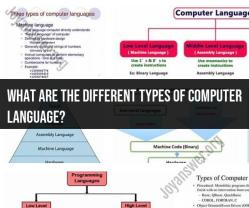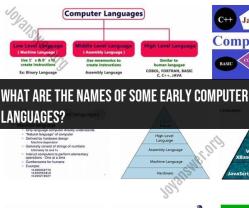What are the different types of computer language?
Computer languages, also known as programming languages, come in various types, each with its own characteristics and use cases. Here are the primary types of computer languages:
Machine Language:
- Machine language is the lowest-level programming language and consists of binary code (0s and 1s) that a computer's central processing unit (CPU) can understand directly.
- It is specific to the computer's architecture and hardware, making it highly efficient but challenging for humans to read and write.
Assembly Language:
- Assembly language is a low-level language that uses mnemonics and symbols to represent machine code instructions.
- It is more human-readable than machine language and is often used for tasks that require close interaction with hardware, such as device drivers.
High-Level Language:
- High-level languages are designed to be more human-friendly and abstracted from the computer's hardware.
- Examples include Python, Java, C++, and Ruby.
- High-level languages use natural language elements and structures that make it easier for programmers to write and understand code.
Procedural Language:
- Procedural languages focus on defining procedures or functions that are executed step by step.
- They are suitable for tasks that involve a series of well-defined operations.
- Examples include C, Pascal, and Fortran.
Object-Oriented Language:
- Object-oriented languages are designed around the concept of objects, which encapsulate data and the functions that operate on that data.
- They promote modularity and code reuse.
- Examples include Java, C++, and Python.
Functional Language:
- Functional languages are based on the concept of mathematical functions and emphasize immutability and the absence of side effects.
- They are suitable for tasks involving complex data transformations and parallel processing.
- Examples include Haskell, Lisp, and Scala.
Scripting Language:
- Scripting languages are often interpreted rather than compiled and are used for automating tasks, web development, and system administration.
- Examples include JavaScript, Python, Ruby, and Perl.
Markup Language:
- Markup languages are used for structuring and presenting data, primarily in web development and document formatting.
- Examples include HTML (Hypertext Markup Language) and XML (eXtensible Markup Language).
Query Language:
- Query languages are designed for database management and retrieval of data.
- SQL (Structured Query Language) is a prominent example used for interacting with relational databases.
Domain-Specific Language (DSL):
- DSLs are tailored to specific application domains and are often used to solve particular problems within those domains.
- Examples include CSS (Cascading Style Sheets) for web design and MATLAB for scientific and engineering computations.
Natural Language Programming:
- These languages aim to allow programming through natural language or human-like instructions.
- They are still in experimental stages and not widely adopted.
Concurrency and Parallelism Languages:
- These languages focus on concurrent and parallel processing, crucial in multi-core and distributed computing environments.
- Examples include Go and Erlang.
Each type of computer language serves specific purposes and has its strengths and weaknesses. Programmers choose the language that best suits the requirements of their projects, taking into account factors like efficiency, readability, maintainability, and the problem domain.



